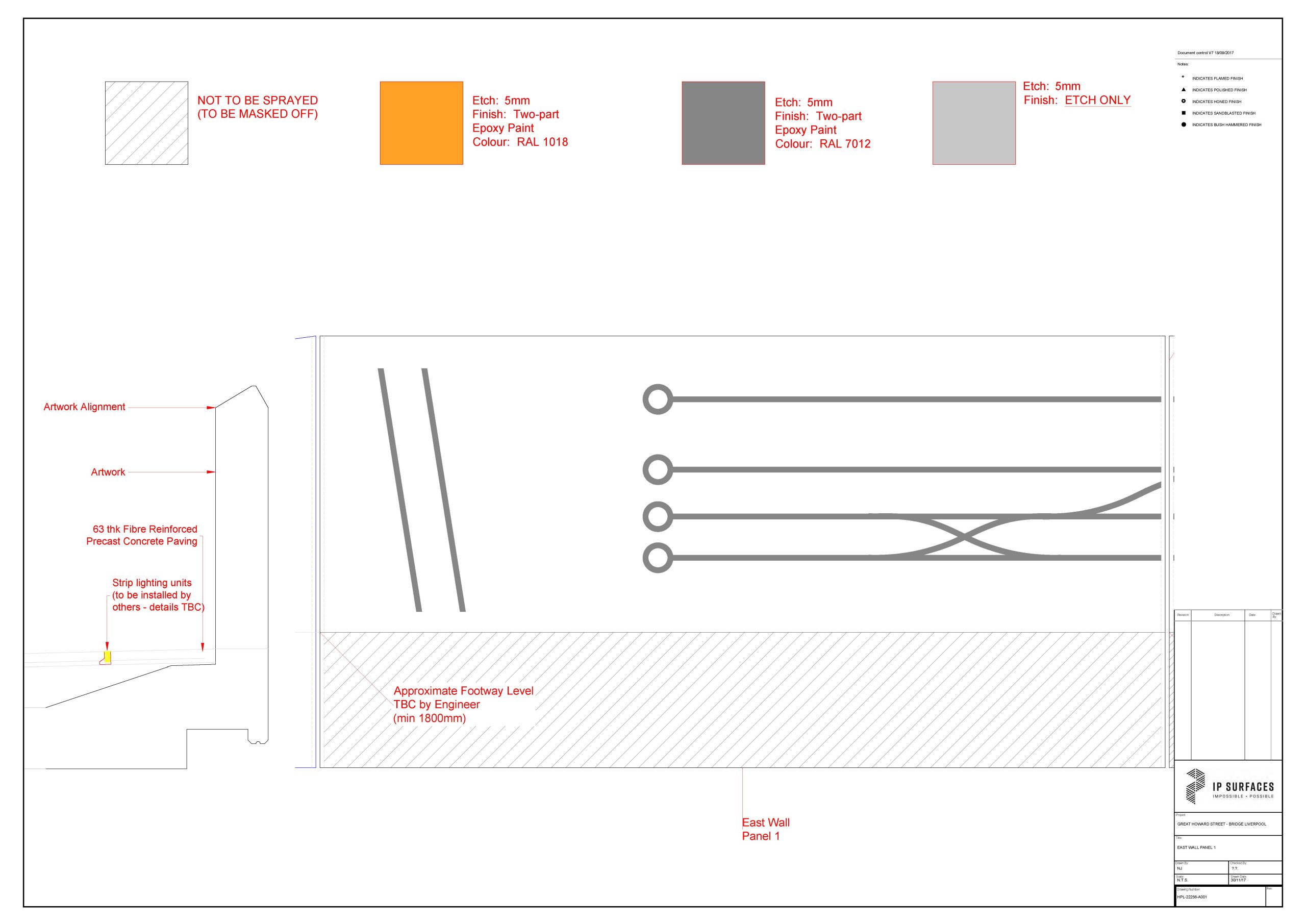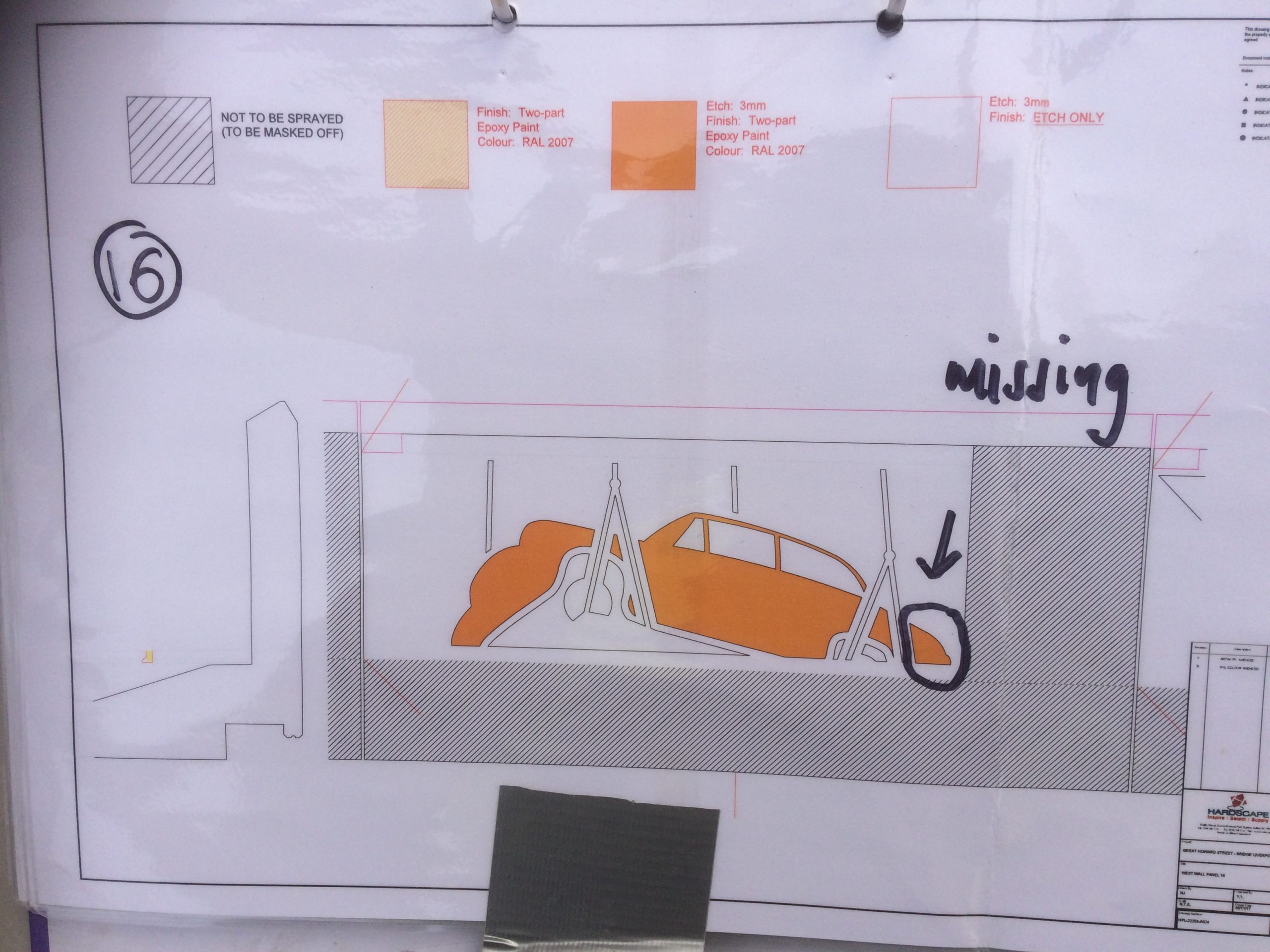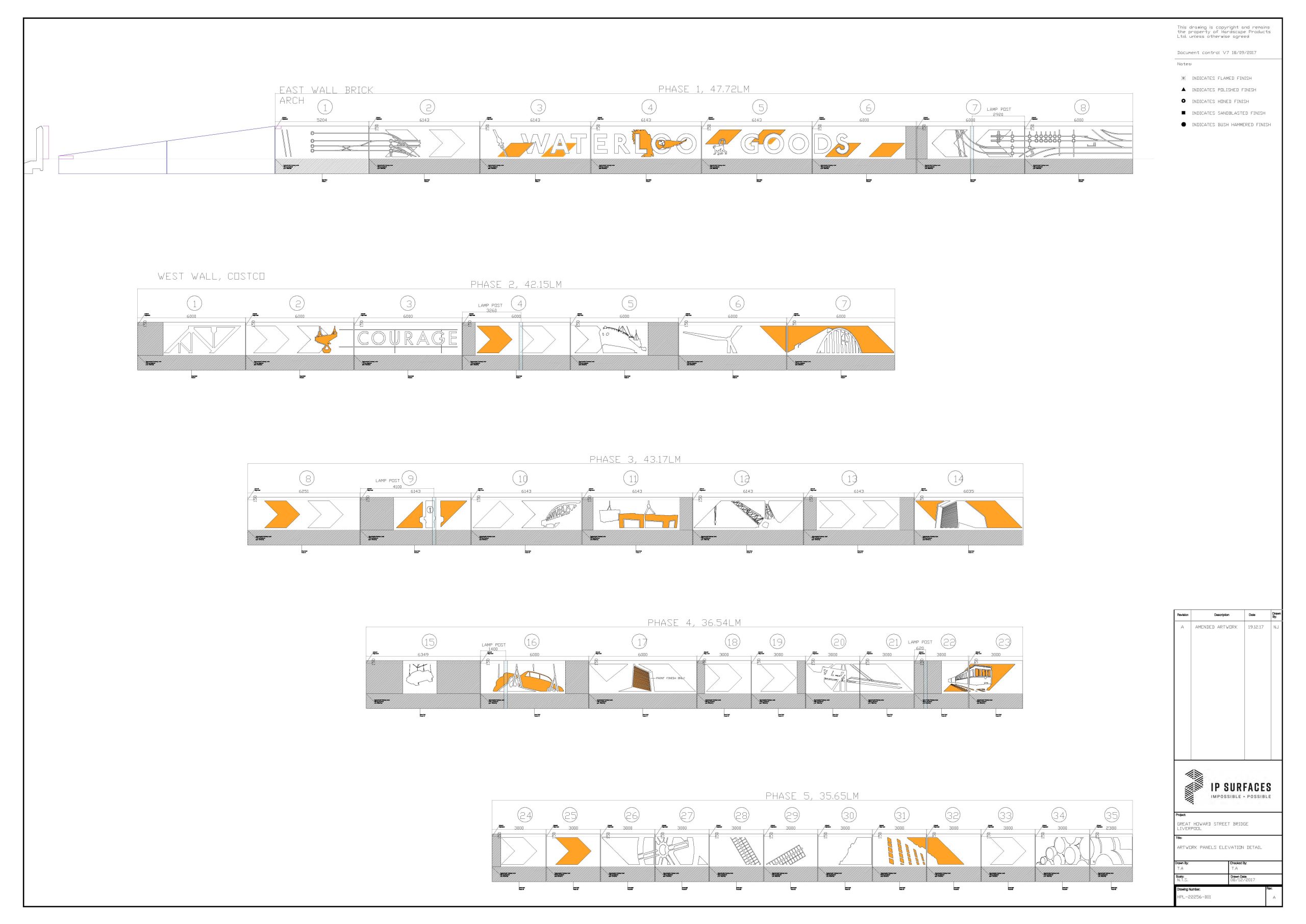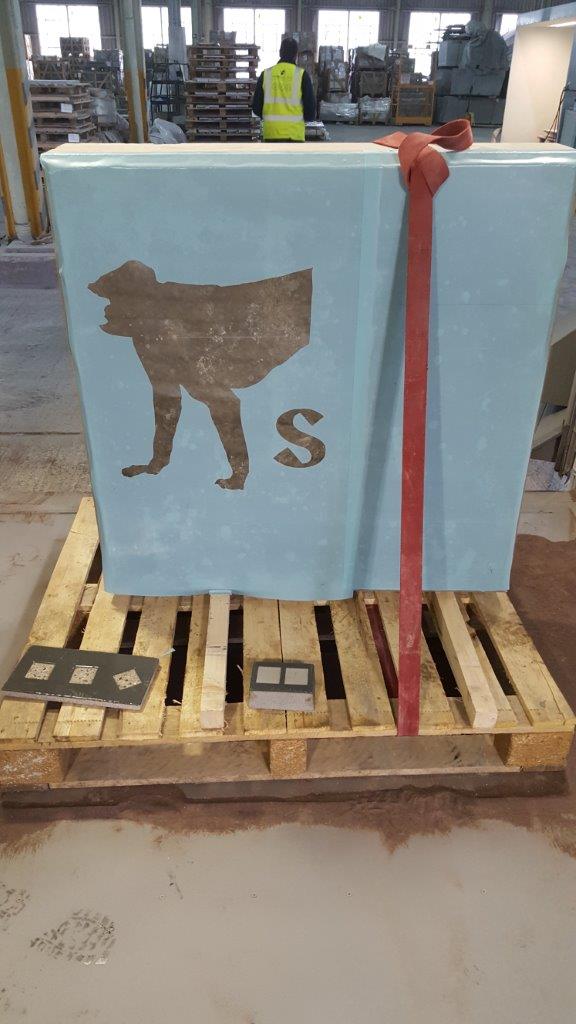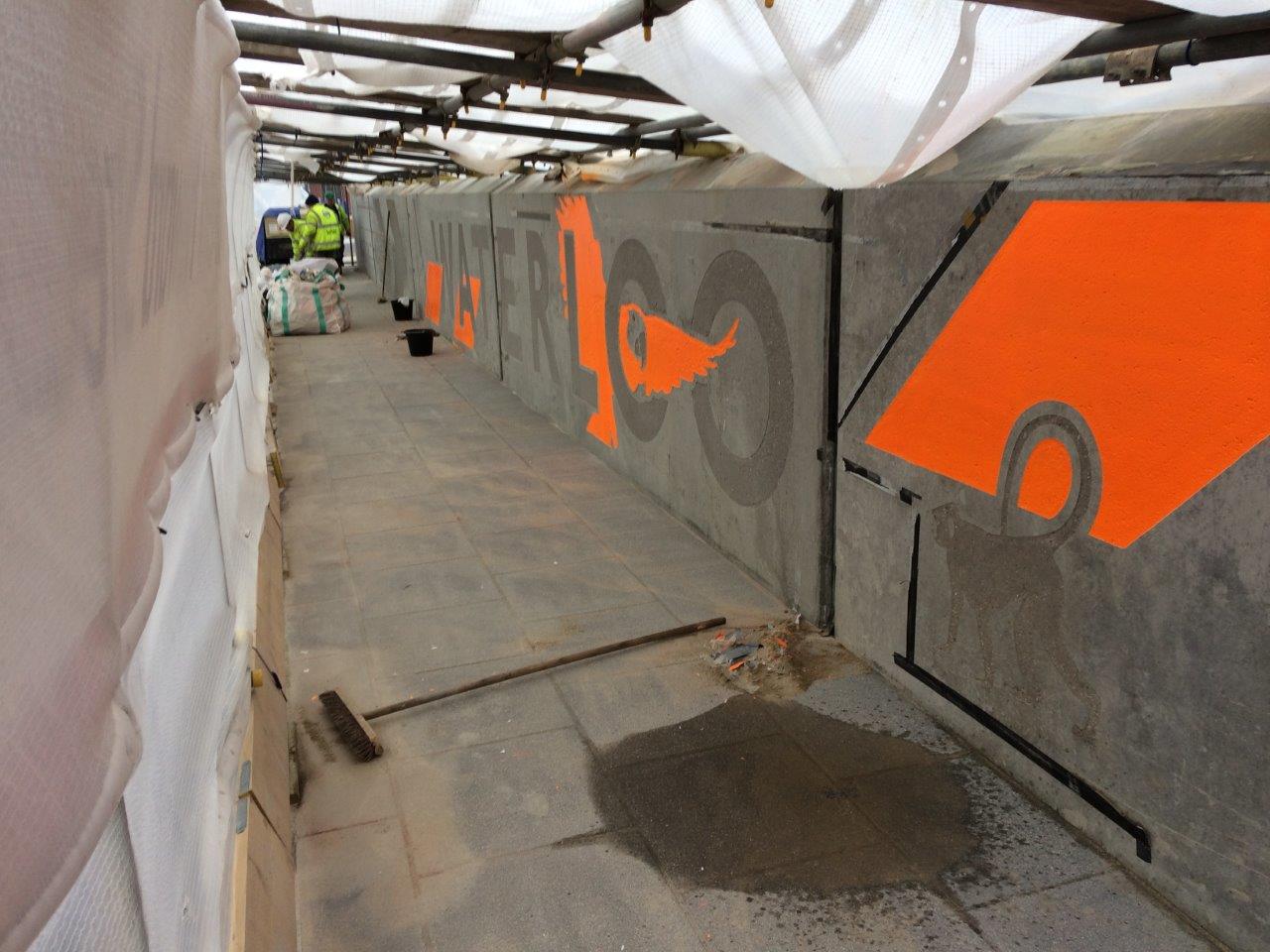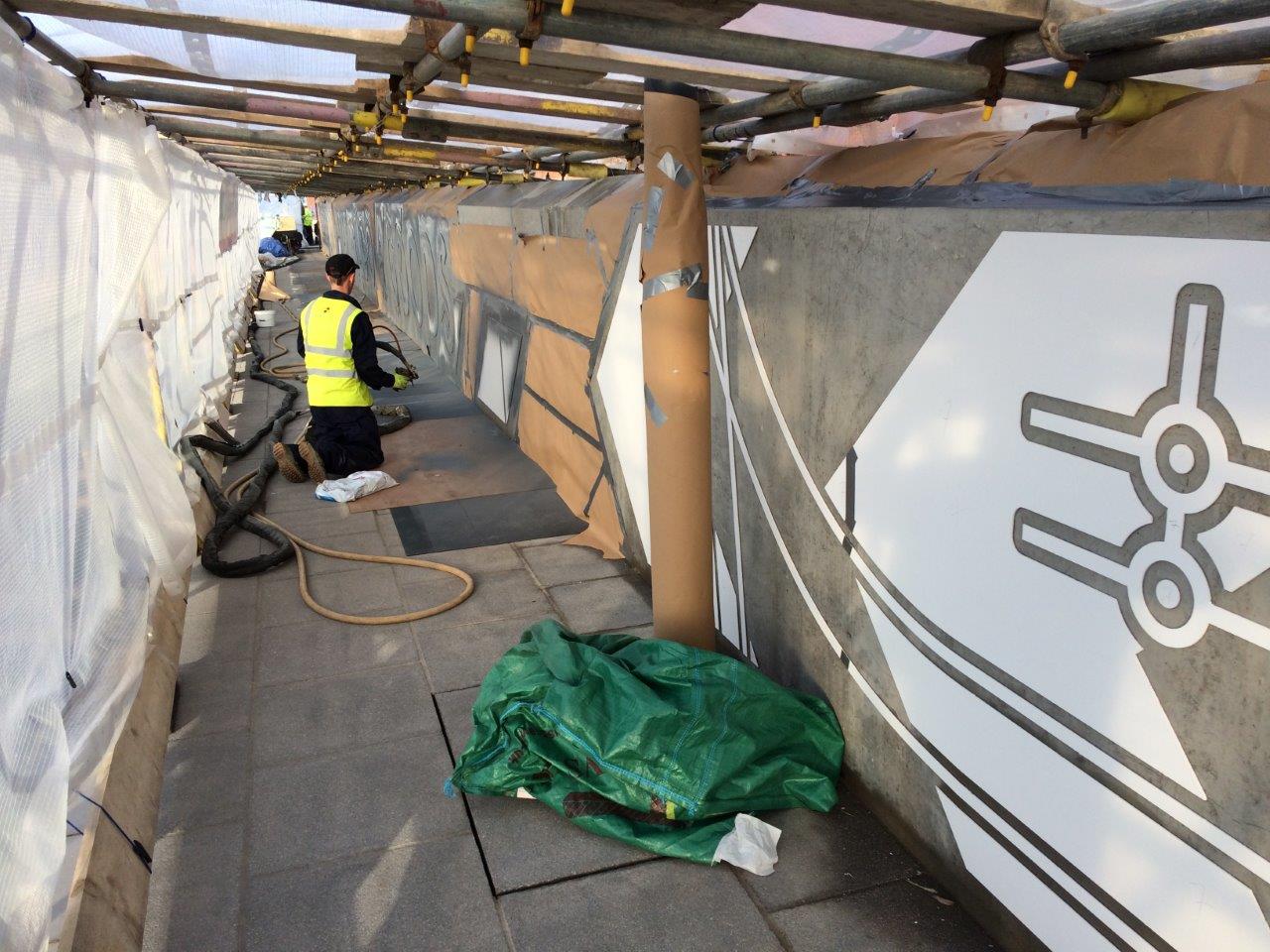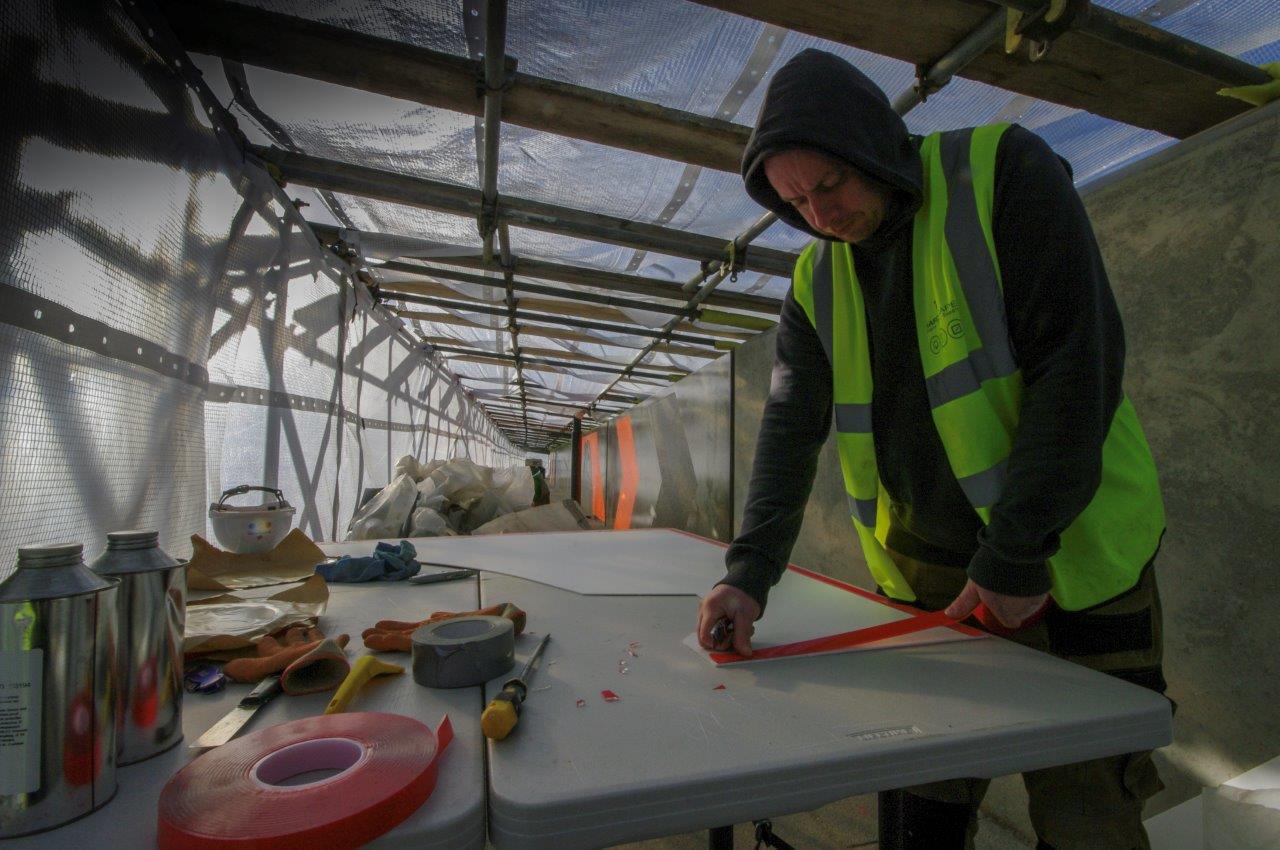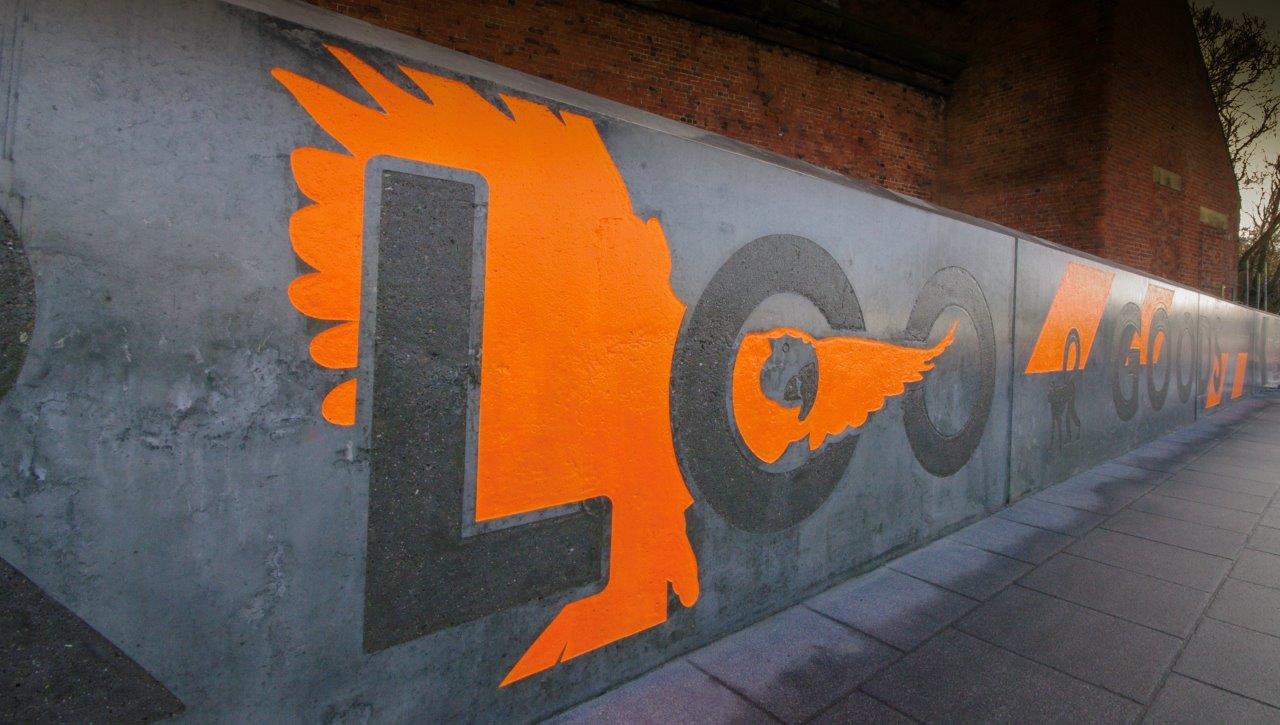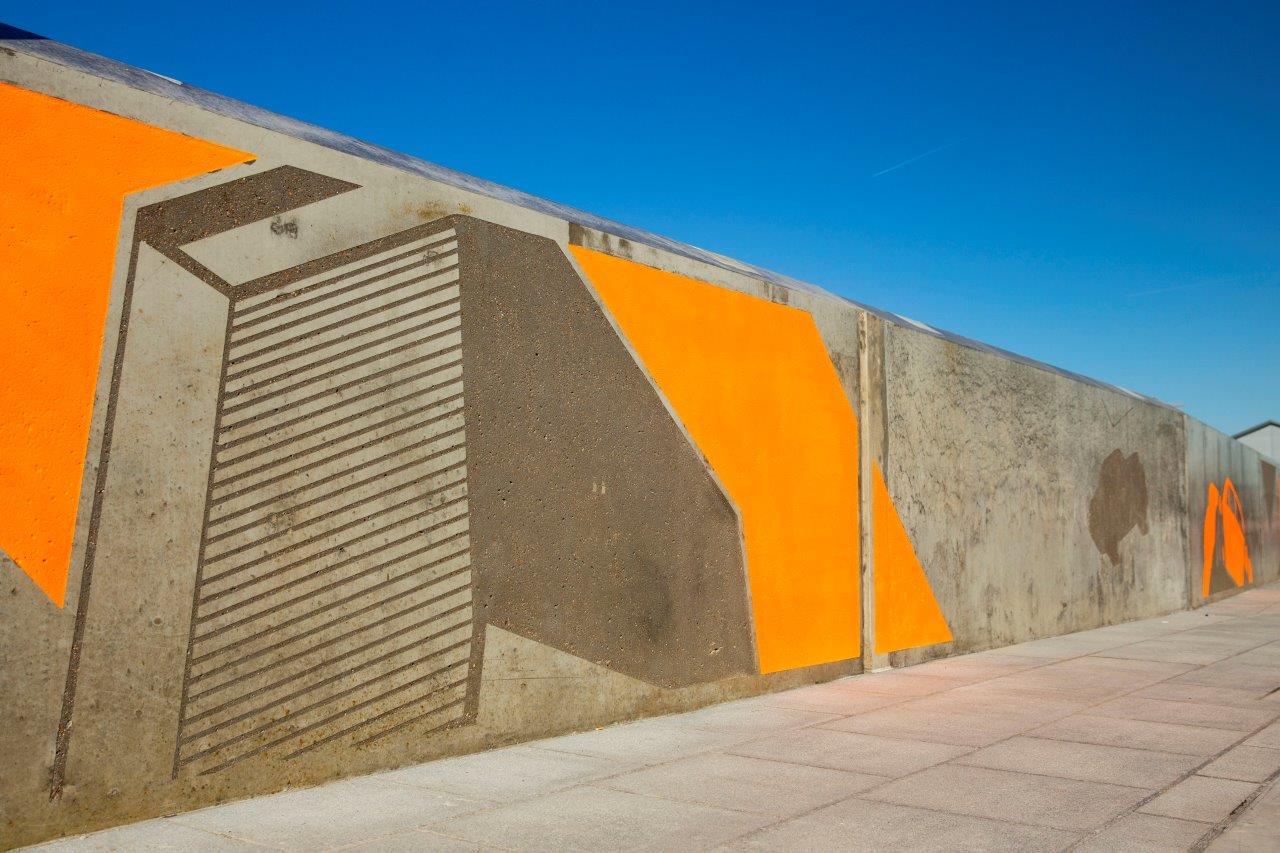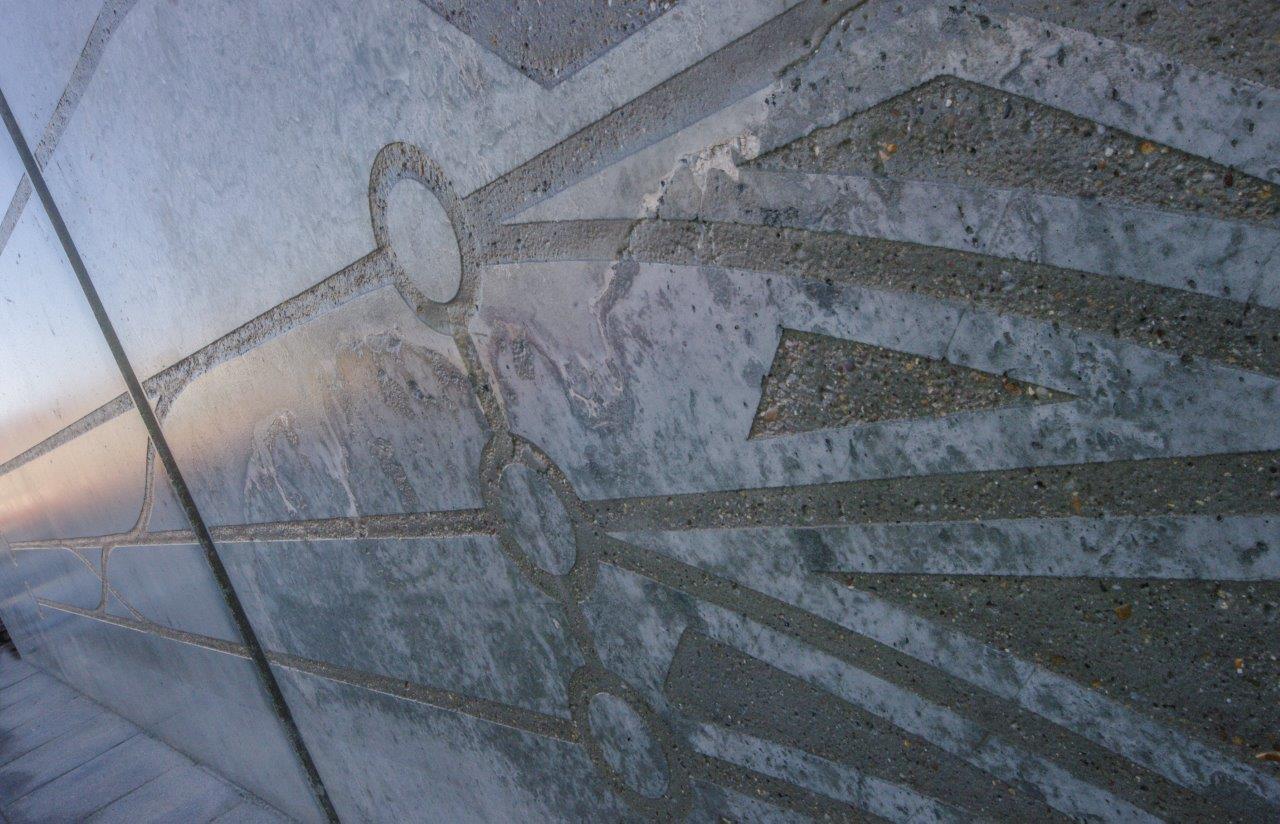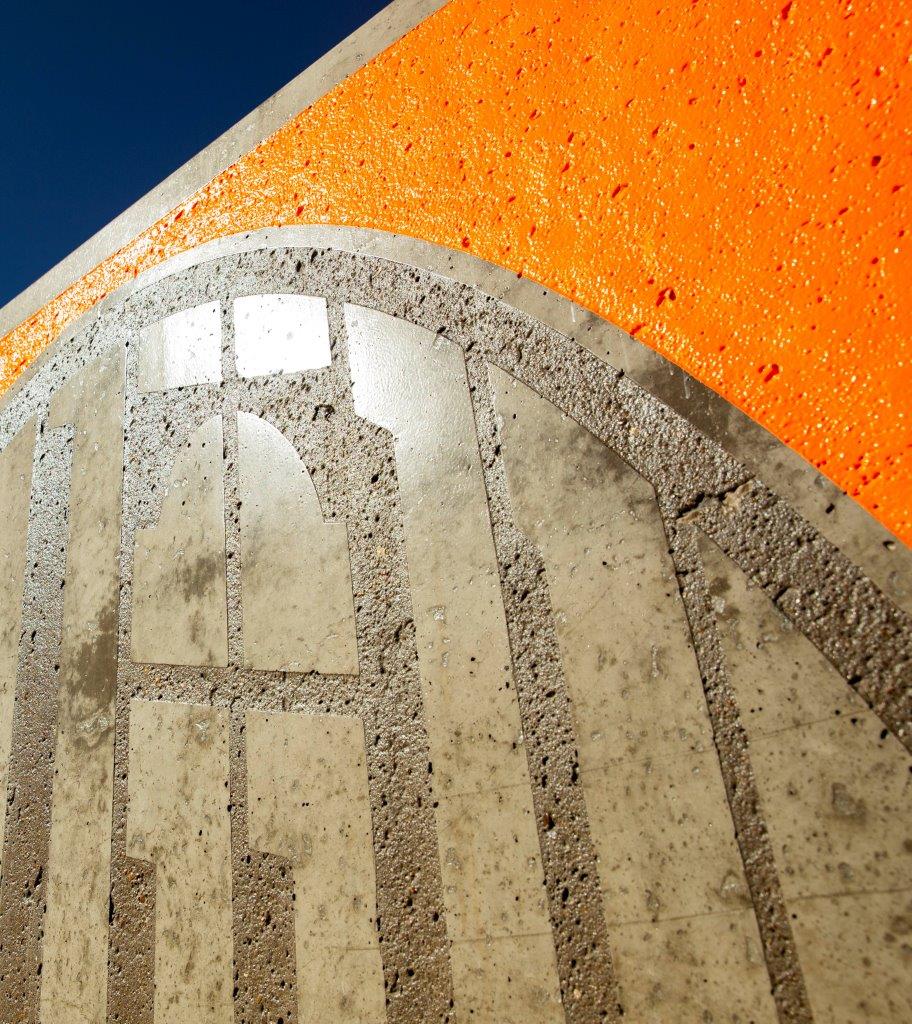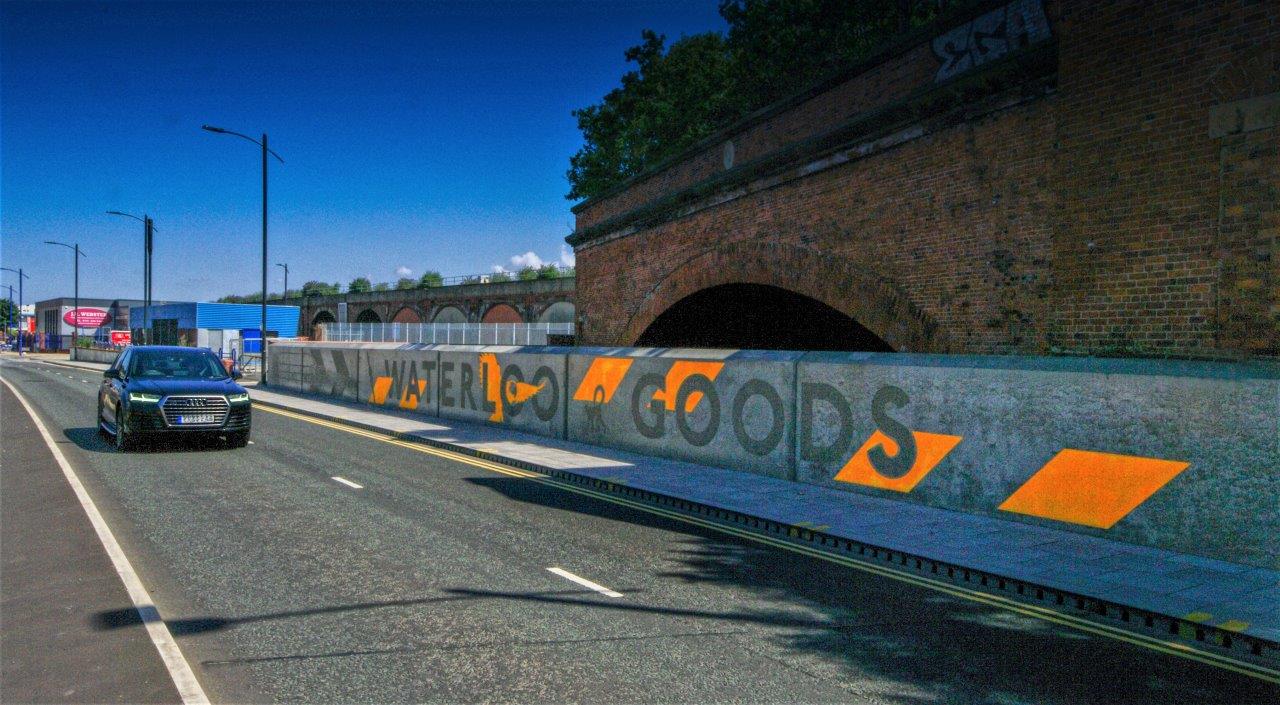As part of the development project to improve Great Howard Street, a new abutment was constructed to create a visually spectacular design feature for the new gateway to Liverpool, reflecting the city’s rich legacy. The ambitious project presented a major design and engineering challenge with a brief to create 46 pieces of artwork on the existing 6 x 1.8m precast cement bridge panels, on-site.
Our Journey
Collaboration was key and Hardscape was enlisted to supply the stone/concrete materials and manage the design process, enabling the artwork to be created on-site. This proved to be a real test and IP Surfaces had to go beyond existing technology to explore new ways of working in order to create factory-quality artwork in-situ. BCA Landscape and local design agency Smiling Wolf led on the design of the revitalised bridge façade, with a brief to improve the aesthetics of the existing parapet bridge panels and create a standout feature to reflect the city’s history and heritage.
Realised in etched concrete with blasts of bright orange paint, the Waterloo Goods artwork stretches the entire length of Great Howard Street Bridge; creating a striking welcome to the city of Liverpool for motorists, cyclists and pedestrians alike. The artwork takes its name from the Waterloo Goods line, the now defunct train line which ran below the bridge, a once key artery for the city as it carried goods from the thriving docks to the wider country. Giant parrots sit side-by-side with local landmarks such as the Mersey Tunnel ventilation shafts and a 1950’s sugar silo – combining the exotic imports found at the dock with the architecture nearby, creating a unique and reverent homage to the cities dockland culture and spirit.
The project was a feat of engineering – previously projects with such a high level of detailed artwork would be carried out in a factory unit and then transported to the site. However, the design work for Great Howard Street Bridge had to be created in a live, weather-dependant, on-site setting. Traditional techniques fell short, pushing the IP Surfaces team to explore new processes and exploring a range of options using its unique and existing capabilities. The result was a ground-breaking on-site, large-scale format media etching and painting process, designed to achieve a multi-surface 3D finish – the culmination of over 140 hours of research, sampling and trials.
Working on site also meant that the teams had to minimise disruption to traffic and ensure the work could be carried out safely and securely. To this end, scaffolding was erected on small sections of the bridge, with work carried out on one area at a time. This also helped the teams to contain dust produced as a result of sandblasting the concrete, while providing a controlled environment for the chemical treatments used to cure the artworks.
By combining pioneering technology, expert insight and inspiring creative design, this project has raised the bar, moving away from a world of plain and austere concrete abutment designs, the Great Howard Street Bridge scheme was enlivened by BCA Landscape’s artistic approach, made possible thanks to Hardscape’s determined passion and belief which enabled a unique new process to be developed and manufactured at IP Surfaces.
As the first of its kind, this now paves the way for other towns and cities to follow suit and provides inspiration for the creation of more outstanding gateway designs across the country. The iconic new Great Howard Street Bridge façade is the first of its kind, both in terms of its design and the delivery technique applied.
We don’t think we can overstate the scale and complexity of this project. Up until now, IP Surfaces had focused on manufacturing in factory conditions. This new process meant that we had to manufacture on-site with all the restrictions and complexities that brings.

